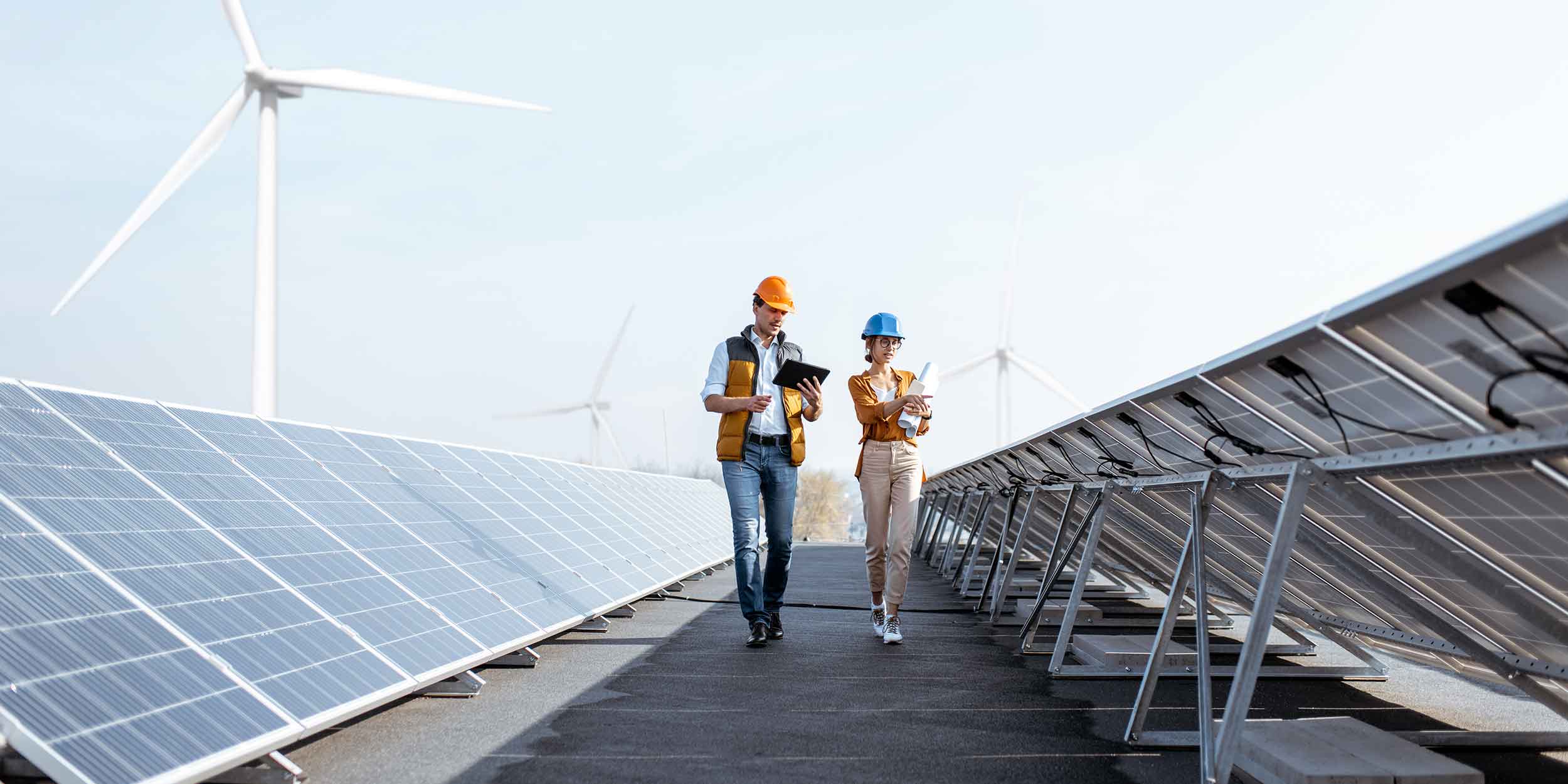Climate change: how captives are becoming a strategic driver of resilience
CaptivesArticleJune 30, 2025
As captives have evolved from a passive insurance vehicle to an active enabler of strategy, they are playing an increasingly important role in managing climate-related risks. With businesses facing new and intensifying exposures, how can captives expand their support?
“The role of captives is no longer just about insurance; it’s about enabling business strategy,” according to Adriana Scherzinger, Group Head of Captives at Zurich Insurance. The purpose of captives has evolved since their origins 60 years ago, she added – they are now a core tool in enterprise risk management strategies and used for a wide range of coverage.
While they were once passive risk retention vehicles, captives now bring together core functions of their parent company to enable investment and drive strategy, she said. Now, as organizations pivot their business models to adapt to the risks and opportunities associated with climate change, the evolution of captives continues.
“Climate change is here, it’s now and it’s reshaping how companies operate, insure, reinsure and think about resilience,” said Scherzinger. “This is exactly where captives can shine. They help build flexible solutions, they can support long-term resilience and they have a way to assume risks when the market won’t or can’t.”
Scherzinger was speaking on a webinar with Zurich experts Dirk de Nil, Global Head Zurich Resilience Solutions, and Susan Fallon, Global Head of Property. The wide-ranging discussion on the role of captives in managing climate risk was hosted by Commercial Risk and moderated by Tony Dowding, Editor of Sustainability Risk Review.
Climate risk: property exposure is rising
With the number of billion-dollar natural catastrophe events rising each year, climate change is already impacting insurance affordability – and in some cases insurability, the webinar heard.
Climate-related insured losses are driven by three factors, Susan Fallon explained: the intensity and frequency of hazards; economic exposures in the location in question; and the vulnerability of the insured to the hazard.
Areas most at risk from future climate-related losses exist where an intensification of natural hazards is “coinciding with really high levels of economic exposures,” she said. Population growth, urbanization, economic development and changing behaviours are together driving up the economic impact of climate hazards.
“The good news is we can do something about this, we can all work on building resilience into the model,” Fallon added. “The first step in cutting economic losses is about how we reduce loss potential in the first place through adaptation measures, whether that is enforcing building codes, increasing flood protection or discouraging settlements in areas which are prone to natural perils,” she continued.
Five ways captives are building climate resilience
The combination of rising natural catastrophe exposures, capacity challenges and the need to invest in adaptation measures is creating fertile ground for captives to expand their strategic role within the parent company.
From filling gaps in traditional insurance coverage to funding investments, captives are becoming an essential piece of the climate risk toolkit. Looking at this in more detail, Scherzinger expanded on five ways captives can support their parent company to build long-term climate resilience.
- Insuring hard-to-place climate risks: captives can be structured to fill the “coverage gaps” that climate change is opening up in traditional insurance. This is happening both for physical hazards such as flood and wildfire, and also the risks associated with the transition to a low-carbon economy, such as business interruption and liability. With their flexible structure, captives can complement insurance programmes in a range of ways, such as increasing retentions, adding capacity and customising coverage.
- Funding investment in resilience: Captives can be leveraged as strategic finance vehicles to fund adaptation measures that will protect the parent company’s physical assets in the face of a more volatile climate. “A captive can fund those initiatives through premiums, accumulating surplus capital and operating in favourable regulatory environments,” said Scherzinger.
- Supporting climate disclosure and ESG goals: Captives can become a “centralised risk intelligence hub” that generate valuable data to inform climate and ESG reporting. Parent companies can use the data for actuarial analysis, climate simulations and tracking climate-related losses and investments.
- Enabling innovation and Green Tech: Traditional insurers may be hesitant to cover unproven green technology that is so often critical for achieving net-zero goals. Captives can therefore be the “first-movers”, providing seed coverage, facilitating parametric coverage, and gathering data that will allow them to partner with reinsurers and eventually scale up.
- Financing and Climate-related risks: Captives can bring the actuarial expertise needed to model low-frequency and high-severity events. They are also well-placed to “connect the dots” across ESG, sustainability, risk and finance teams, providing a cross-functional view that is essential for financial modelling and an integrated strategy.
Adding value with external expertise
What role can insurers play in helping captives build resilience? Dirk De Nil, Global Head of Zurich Resilience Solutions, works closely with companies on building climate-resilient strategies. He explained how Zurich Resilience Solutions is supporting captives.
The starting point is access to quality, proprietary data, he said. This is vital for understanding climate exposures and key to transforming a captive into a strategic enabler. Zurich combines its heritage of over 150 years’ worth of underwriting, claims and risk data with modern artificial intelligence and increased computational power to drive precise insights and benchmarking intelligence.
Second, Zurich conducts global exposure analysis for its clients, combining quantitative and qualitative methods. The quantitative analysis identifies customers’ most critically-exposed locations, taking into account the three drivers of insurance loss – hazard, exposure and vulnerability – and overlaying them with climate data.
The qualitative steps are equally important. “Once you have defined your most critical exposures, our risk engineers can go assess the risks on-site more deeply, uncover hidden vulnerabilities and work with the customer to define additional controls required to improve resilience,” De Nil said.
The third and most important step is quantification. In order to assess the return on a potential investment to improve climate resilience, Zurich quantifies different loss scenarios with and without resilience measures in place.
Managing future uncertainty is a complex but critical factor in the process. Depending on the controls put in place, “the severity and the likelihood of a loss will be different. Our specialist risk engineers are experienced in providing customers with these insights and exposure amounts,” De Nil added.
Why resilience matters: positive results
Building climate resilience requires careful planning and investment – but the results show that it works. “Investments in resilience are much more cost-effective than rebuilding,” De Nil said. He noted resent research demonstrating that buildings erected in the Florida area after 2010 incur 30% less loss after a hurricane, simply because of improvements in building codes and materials used.
Positive financial outcomes also come in the form of better access to insurance capacity and capital, added Scherzinger. Whether seeking capital or capacity, the most powerful story to tell, she said, is that you are investing in your own business. Don’t just present your risk and risk-modelling – go one step further and demonstrate the resilience you are building.
Climate change is arguably one of the most complex challenges facing businesses today. Each company will face its own particular risks and pave its own unique road to resilience. Whichever strategies are deployed, however, the panel agreed that captives can play a pivotal role in supporting companies.
Much of their strategic value lies in their ability to bring flexibility and control in a wide range of areas – a key theme of the discussion. Whether they are driving a stronger understand of risks, enabling investments, providing insurance capacity or underpinning ESG reporting, the role of captives continues to evolve and opens exciting opportunities for their parent companies.



